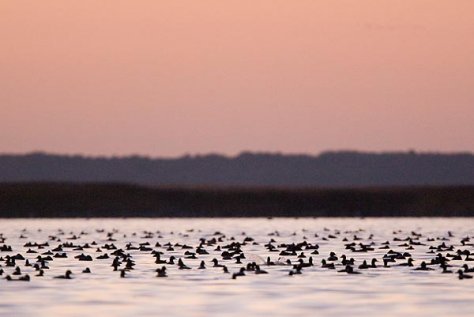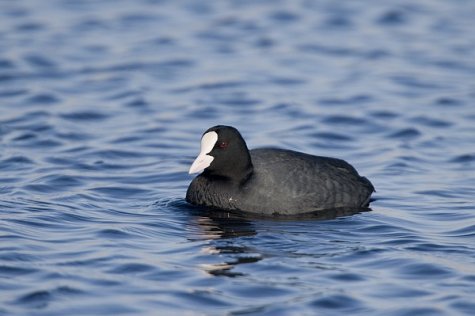Coot flocks to be seen in reed beds
Photos: Arne Ader
Translation: Liis
Evening with coots. Matsalu bay
Coot Lauk ehk vesikana Fulica atra
Few coots stay in Estonia for winter and the last of the passing migrants leave as the waters freeze. The flocks of coots keep to large reed beds with plenty of nutrients.
With some imagination coots, with a stocky and round body shape, remind of diving ducks; the old Estonian name, vesikana, water hen, is quite descriptive too. The plumage of the birds is a dull black, of course the white forehead blaze and the unusual white beak are distinctive (see Arne’s photo below). Eyes are red and a coot weighs is up to a kilo. It is difficult to distinguish between female and male birds but if you should manage to observe them in a good telescope the shape of the forehead blaze is worth studying. The forehead blaze of males is broader and more rounded at top.
Coots are good swimmers, diving however does not work out so well, so in case of danger they quickly hide in the reeds. They rise into flight against the wind; it needs a long takeoff, assisted by running with splattering feet. Flight speed and image are quite passable.
The birds, rather secretive during nesting, are well visible in their wintering areas in western Europe, swimming around in harbours as well as city ponds.
Coot










